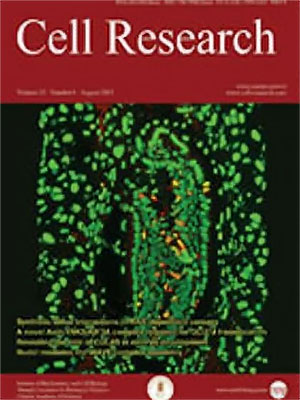
Volume 14, No 3, Jun 2004
ISSN: 1001-0602
EISSN: 1748-7838 2018
impact factor 17.848*
(Clarivate Analytics, 2019)
Volume 14 Issue 3, June 2004: 197-207
ORIGINAL ARTICLES
Characterization of rtSH3p13 gene encoding a development protein involved in vesicular traffic in spermiogenesis
Yuan QIAO1, Ju Xiang YANG1, Xiao Dong ZHANG1, Yu LIU1, Jian Chao ZHANG3, Shu Dong ZONG3, Shi Ying MIAO1, Lin Fang WANG1,*, Samuel S. KOIDE2
1National Laboratory of Medical Molecular Biology, Institute of Basic Medical Sciences, Chinese Academy of Medical Sciences, Peking Union Medical College, 5 Dong Dan San Tiao, Beijing 100005, China.
2Center for Biomedical Research, Population Council, 1230 York Avenue, New York, NY 10021, USA.
3National Research Institute for Family Planning, 12 Da Hui Si, Hai Dian, Beijing 100081, China.
Correspondence: Lin Fang WANG(wanglf@ms.imicams.ac.cn )
A cDNA, designated as rtSH3p13, was isolated from a rat testis cDNA library. It consists of 1463 bp nuclear acids, which encodes a protein of 312 amino acids and was assigned the GenBank accession number AF227439. The deduced rtSH3p13 protein is a truncated isoform of SH3p13 as a result of mRNA alternative splicing. It is mainly expressed in the rat testis, detected in spermatids at the steps 8-19 of spermiogenesis, and found around the acrosome. During postnatal development, rtSH3p13 appears on day 18 and reaches maximum on day 60. Further experimental results suggested that rtSH3p13 forms a complex with activated epidermal growth factor receptor (EGFR) and interacts with synaptojanin I. Surprisingly, similar to SH3 domain, the V region of rtSH3p13 also inhibits endocytosis in CHO cells. Our results reveal a link between an rtSH3p13-synaptojanin-clathrin complex-mediated formation of pits and the process of spermiogenesis.
FULL TEXT | PDF
Browse 1895


